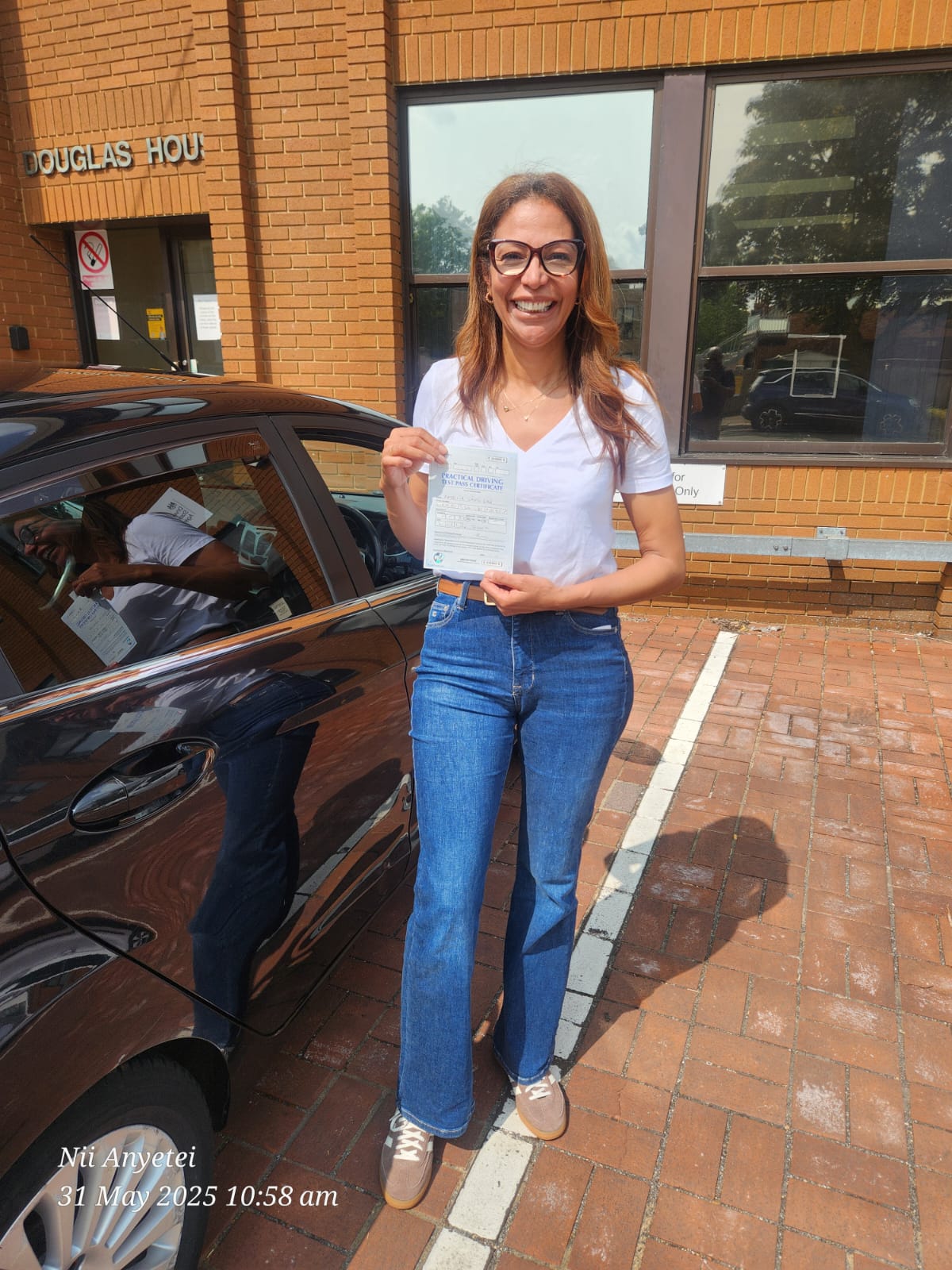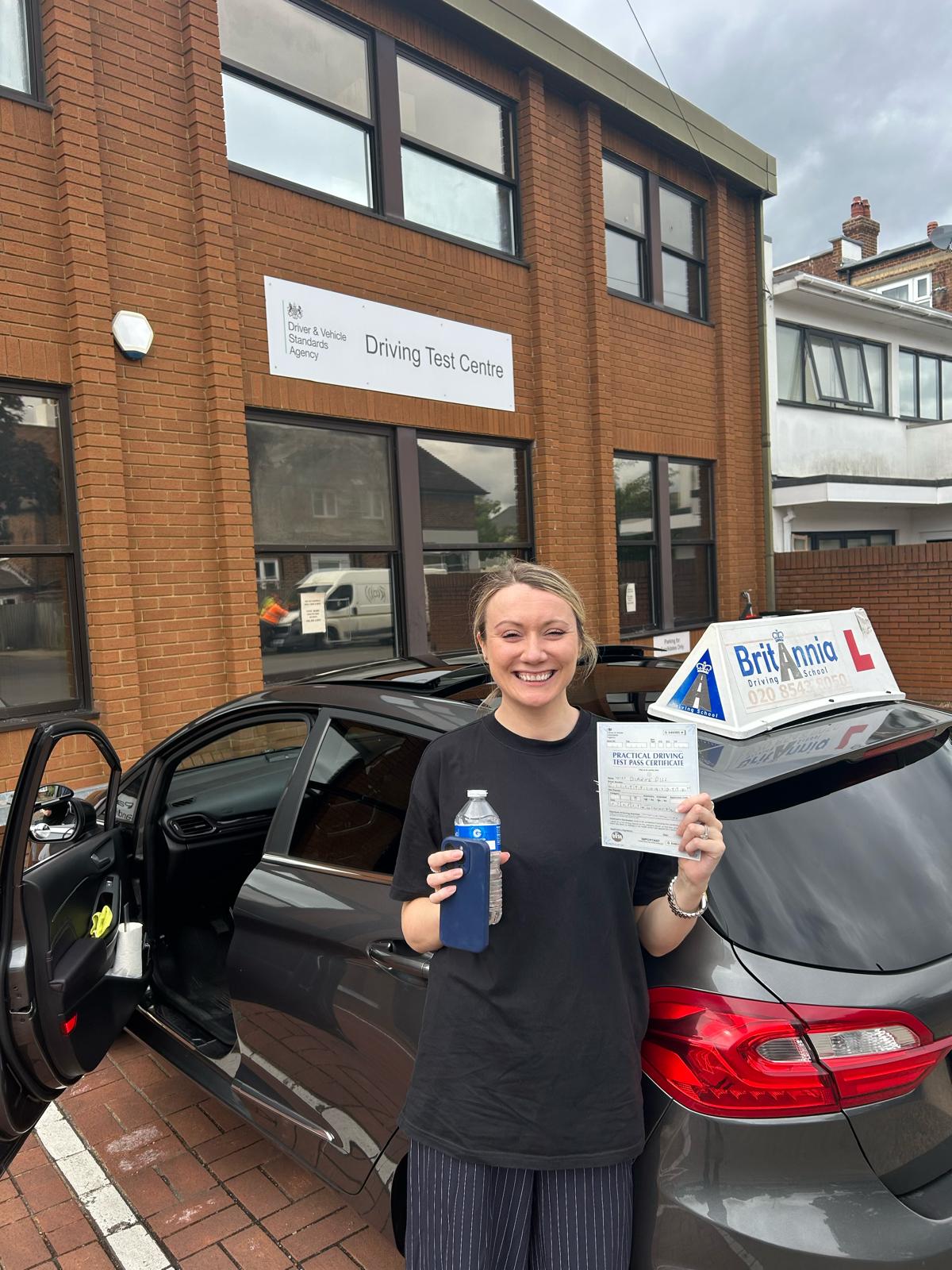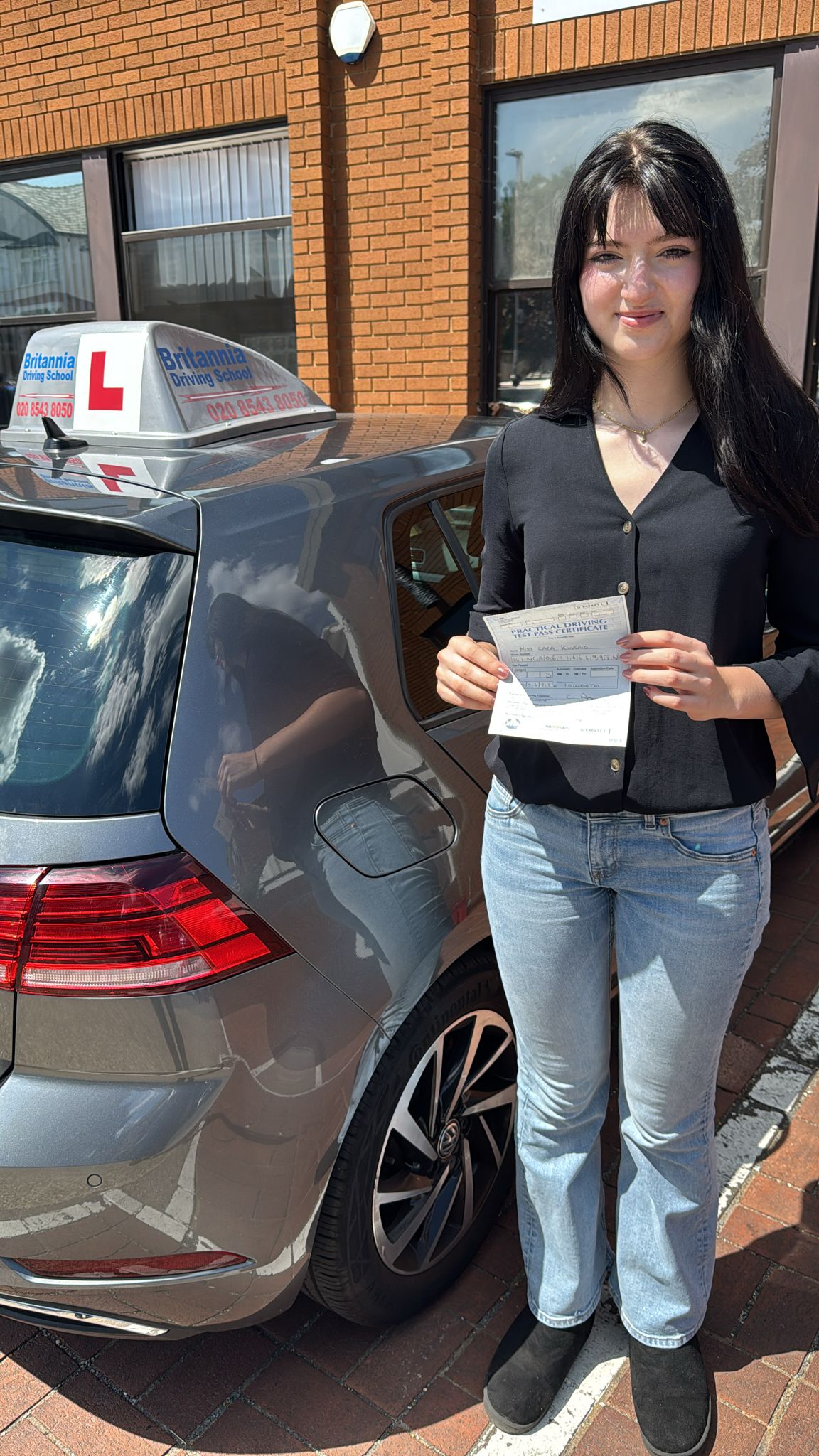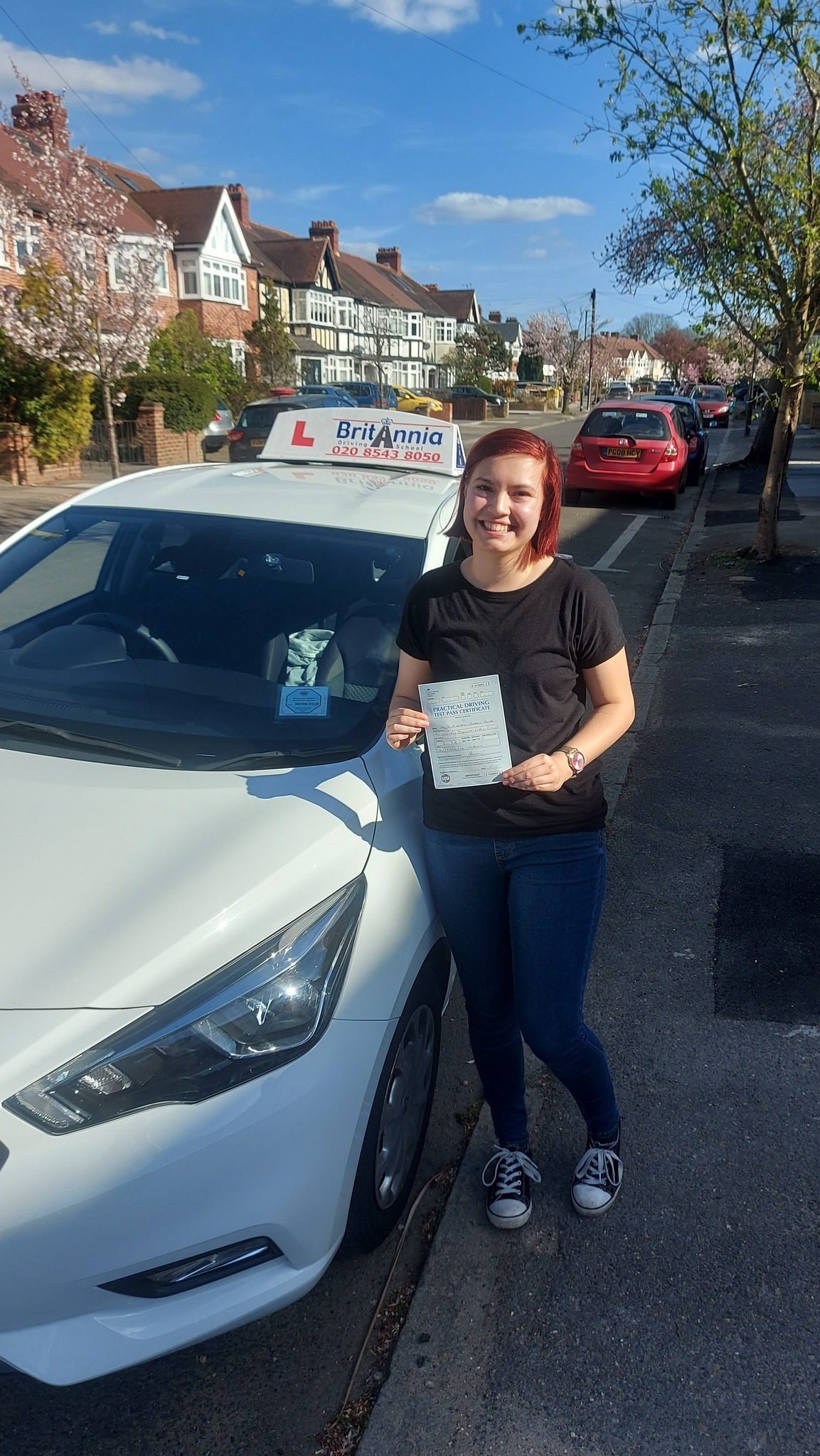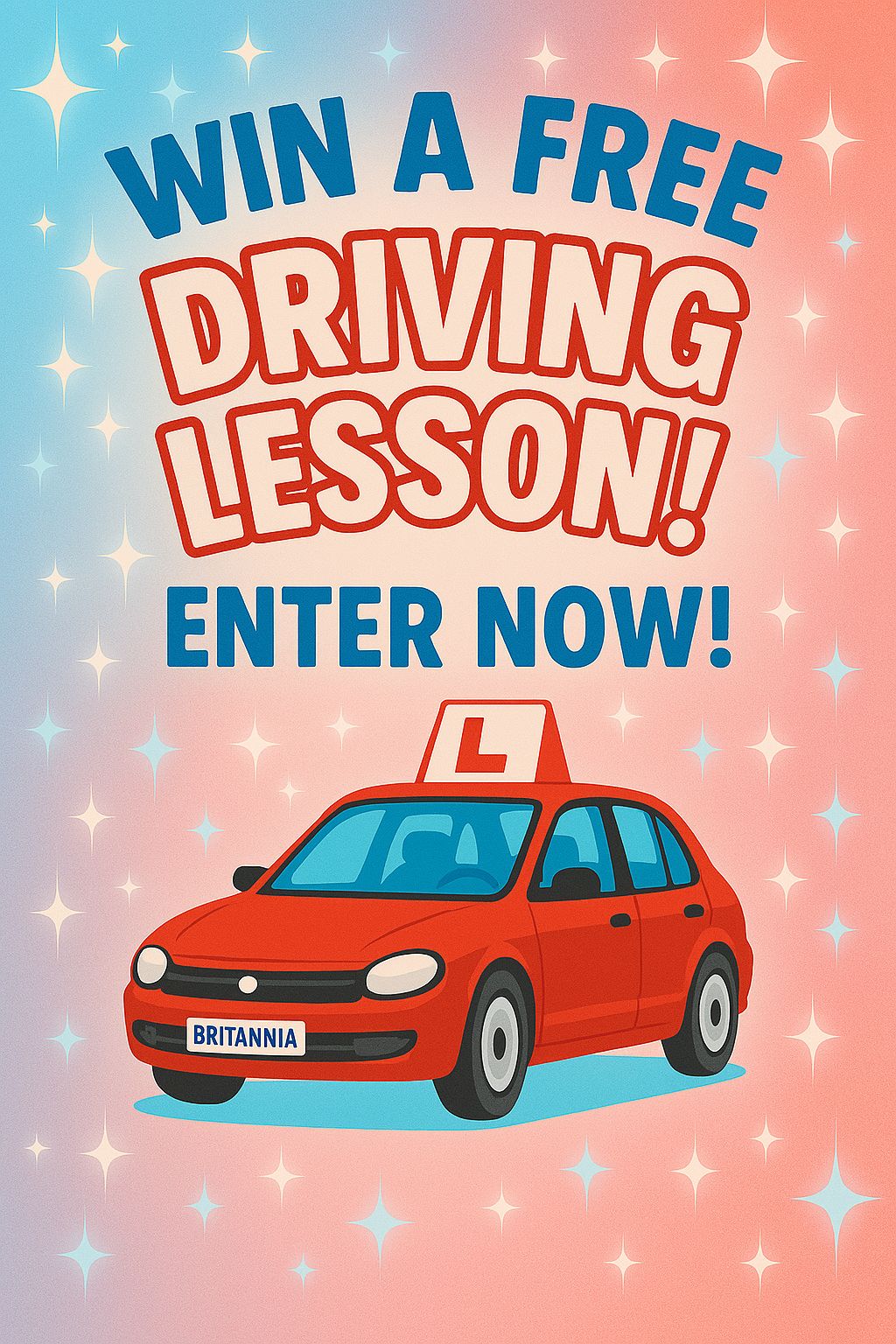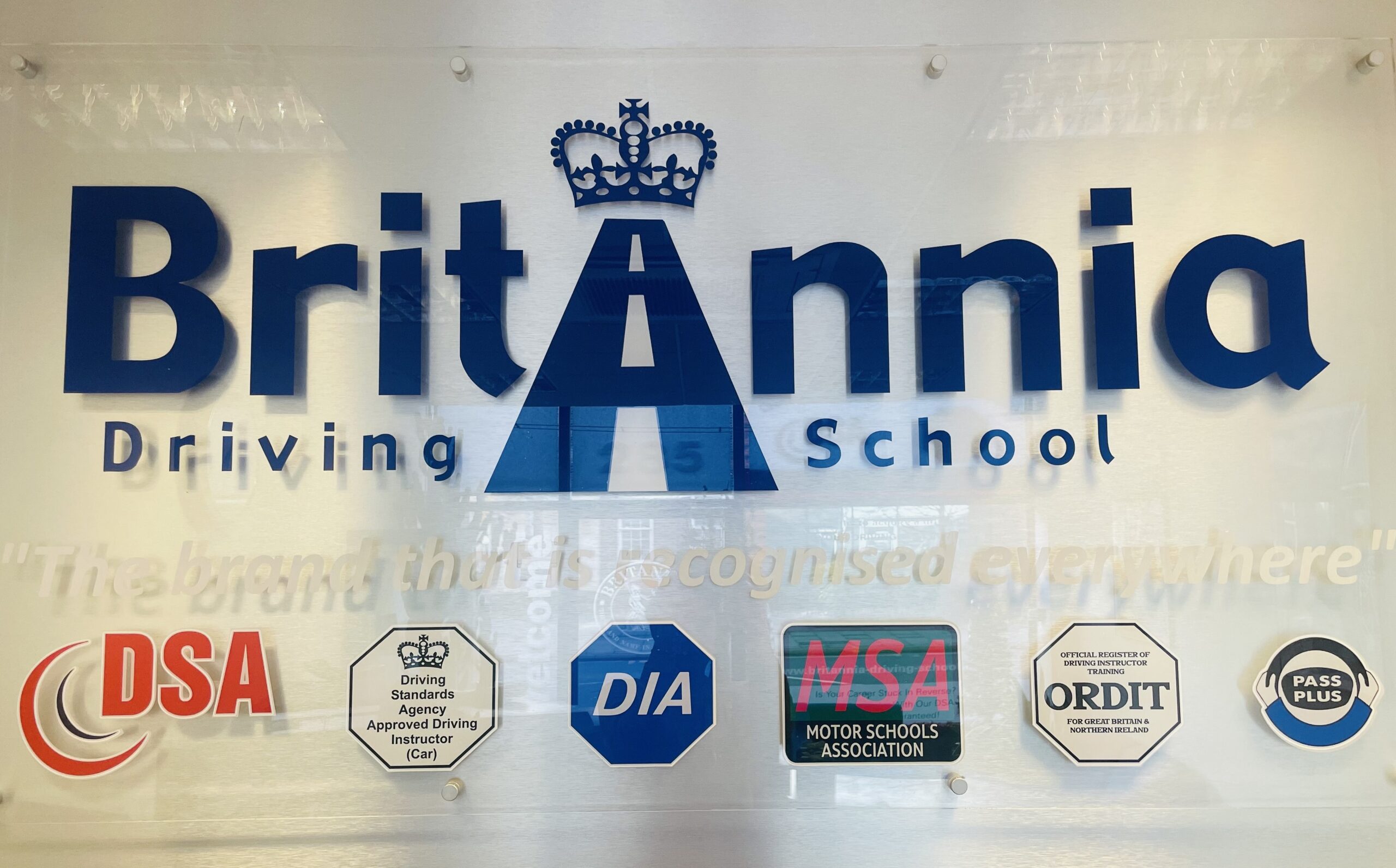At Britannia Driving School, every pass is more than just a certificate—it’s a moment of triumph, confidence, and pure joy. We’re thrilled to celebrate our incredible pupils who’ve turned their driving dreams into reality! From first-lesson nerves to test-day cheers, these snapshots capture the pride, perseverance, and personality of our newest road-ready stars. Scroll through and meet the faces behind the passes—you might just be inspired to start your own journey with us!
They Passed with Flying Colours – And We’ve Got the Pics to Prove It!
Look at that smile – another Britannia success story! Patrica passed with us after taking lessons with Leslie.
Patricia also left a wonder testimonal on our website :
“I am so glad to have chosen Britannia Driving School and was the best thing that ever happened to me. I am a driver for 33 years in another country and decided to get my drive license in UK. At first I had another driving school but the instructor made me so nervous that I didn’t want even to do the test. My husband then told me to contact Britannia and get a new instructor. The school send me Mr. Leslie to teach me and he was brilliant! Very inspiring man that helped me to build my confidence again and do the test. I pass at the first time! Thanks Mr. Leslie for your support and to believe in me and show me that I could do it! Thanks Brittania for the go work. I will certainly refer you to my friends and family.”
Passed with flying colours! Your journey starts here! Dianne passed after taking lessons with George.
Dianne also left George a wonderful testimonal:
“I couldn’t have asked for a better driving instructor than George! From day one, he was kind, incredibly patient, and always calm — even when I made the same mistakes more than once. George never made me feel embarrassed or discouraged; instead, he guided me with confidence and understanding every step of the way.
His teaching style is clear, encouraging, and tailored to your pace. His mix of top-tier driving knowledge and good humour made lessons something to actually looked forward to!
Thanks to George, I passed my test and I can’t recommend him highly enough!”
Confidence, commitment, and a pass certificate to prove it! Lara passed after taking lessons with Jon.
Lara left Jon amazing feedback on our Trustpilot:
“I passed first try with Jon as my driving instructor, and cannot thank him enough. He is a stellar instructor, very punctual, clear and organised; he knew all the routes that I could come across for the test and taught me everything I needed to know and more, hence building my confidence to allow me to pass first try. Thanks to Jon’s patience I now feel confident enough driving alone despite starting with zero experience, and so I truly recommend Jon for productive and enjoyable lessons!
Thank you so much to Jon!”
License unlocked—next stop: freedom! Rachel passed after taking lessons with Gary.
Rachel left a lovely tesimonal for Gary:
“I had a great learning experience with my instructor Gary – he was always patient and kind and made every lesson fun. I passed today first time with 0 minors, so I think that tells you everything you need to know about how good an instructor Gary is!”
Ready to Be Our Next Success Story?
Every pass photo you’ve seen here is more than just a smile—it’s a story of growth, grit, and guidance. At Britannia Driving School, we’re proud to support our pupils every step of the way, from first lesson jitters to test-day triumphs. If you’re dreaming of your own pass moment (and maybe a spot on our wall of fame!), we’re ready when you are. Join the Britannia family and let’s make your driving journey unforgettable.
Comments(0) Buy Gifts Vouchers Here
Buy Gifts Vouchers Here Intensive Driving Courses
Intensive Driving Courses Driving Test Booking Services
Driving Test Booking Services



